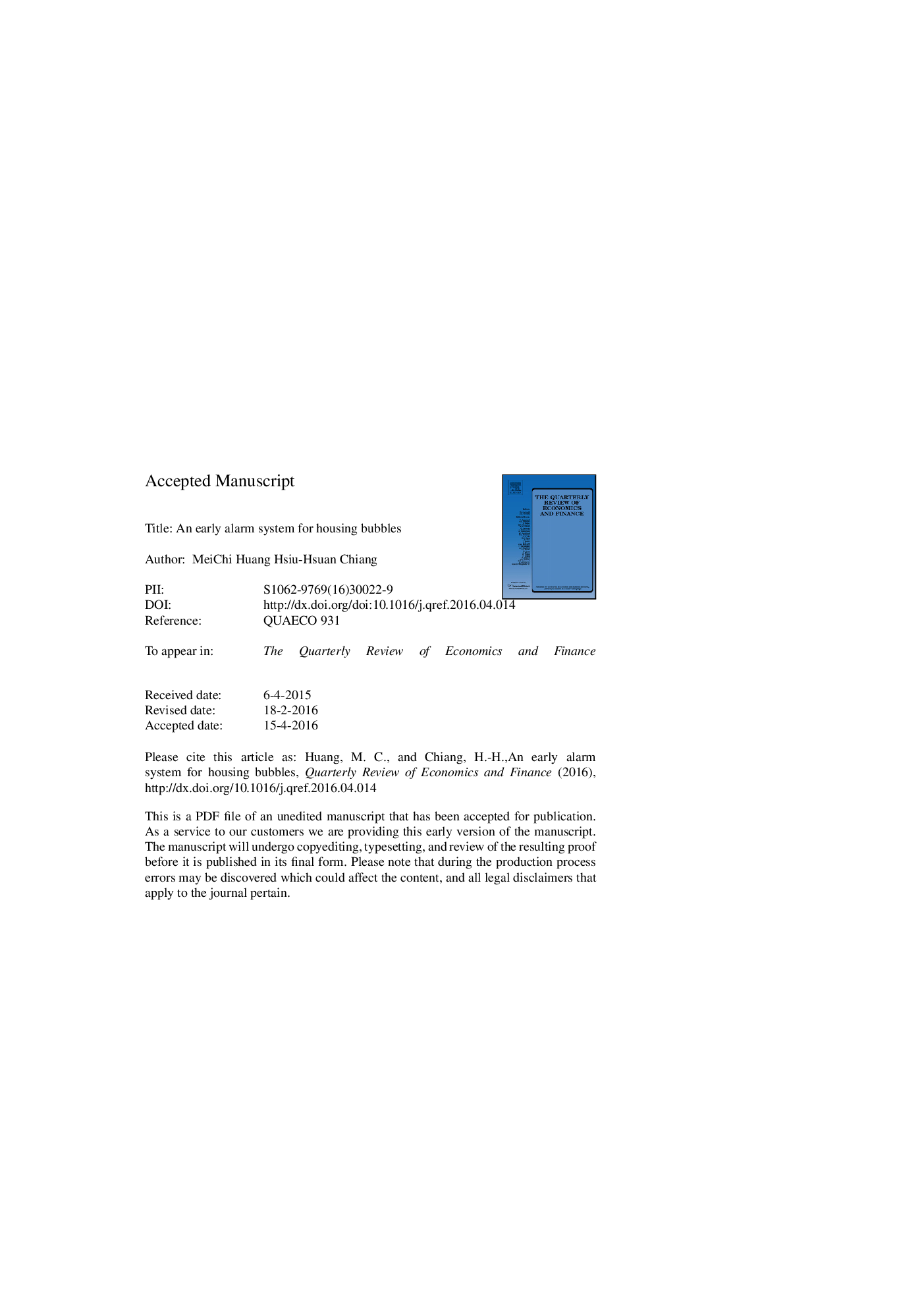| Article ID | Journal | Published Year | Pages | File Type |
|---|---|---|---|---|
| 5103579 | The Quarterly Review of Economics and Finance | 2017 | 41 Pages |
Abstract
The study establishes an early alarm system under a threshold unobserved components model, which divides the US housing price dynamics into permanent and transitory components and links cyclical housing price returns with income fundamentals. The system provides three signs of housing-bubble vulnerability for twenty state-level housing markets in the period 1975-2011. The results uncover that after 1999 many states show the first and second signs, high persistence in their housing prices and insignificant or significantly negative income-housing price linkages, respectively. Furthermore, during the recent housing boom-bust cycle, some states that are commonly considered to be subject to housing bubbles display the third sign, trends playing a dominant role in the variability of the housing markets. The alarm system enables us to detect housing-bust regimes one period in advance and indicates that the selected states experienced such regimes from 2006 to 2011.
Related Topics
Social Sciences and Humanities
Economics, Econometrics and Finance
Economics and Econometrics
Authors
MeiChi Huang, Hsiu-Hsuan Chiang,
